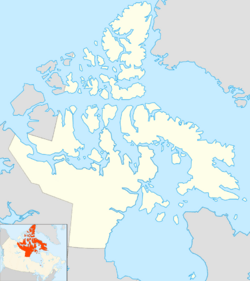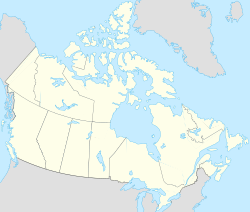Smith Island (Hudson Bay, Nunavut) facts for kids
| Geography | |
|---|---|
| Location | Hudson Bay |
| Coordinates | 60°45′N 078°25′W / 60.750°N 78.417°W |
| Archipelago | Canadian Arctic Archipelago |
| Area | 131 km2 (51 sq mi) |
| Administration | |
| Territory | Nunavut |
| Region | Qikiqtaaluk |
| Demographics | |
| Population | Uninhabited |
Smith Island is a cool island located in the northern part of Canada. You can find it in the eastern area of Hudson Bay. Even though it's close to Quebec, it's actually part of the Nunavut territory. Specifically, it belongs to the Qikiqtaaluk Region. The island is about 2 kilometers (1.2 miles) away from the western coast of Quebec's Ungava Peninsula.
Contents
Exploring Smith Island
Smith Island is a fascinating place, even though no one lives there permanently. It's a great example of the many islands found in Canada's vast northern regions.
Where is Smith Island Located?
Smith Island sits in the huge Hudson Bay, which is a very large body of saltwater in Canada. It's part of a group of islands known as the Canadian Arctic Archipelago. This archipelago includes many islands in the far north of Canada. The island's exact spot is at 60 degrees 45 minutes North latitude and 78 degrees 25 minutes West longitude. This means it's quite far north, in a cold part of the world.
Size and Features
Smith Island covers an area of about 131 square kilometers (50.6 square miles). To give you an idea, that's roughly the size of a medium-sized city, but without any buildings or roads! Since it's an uninhabited island, it's mostly untouched nature. The landscape likely includes rocky shores, low-lying areas, and perhaps some small hills.
What's the Weather Like?
Because Smith Island is so far north, it has a polar climate. This means the winters are very long, cold, and dark. Temperatures can drop extremely low. Summers are short and cool, with temperatures usually staying above freezing, but not by much. The island often experiences strong winds and can be covered in snow and ice for most of the year. This harsh weather makes it a challenging place for plants and animals to live.
Animals and Plants
Even though the climate is tough, some amazing wildlife can be found on or around Smith Island.
- Marine Mammals: The waters around the island are home to animals like seals and whales. Polar bears might also visit the island, especially during the colder months when they hunt for seals on the ice.
- Birds: Many types of migratory birds use the Arctic islands as breeding grounds during the short summer. You might see seabirds like gulls, terns, and various types of ducks.
- Land Animals: On the island itself, smaller animals adapted to the cold, like Arctic foxes or lemmings, might be present.
- Plants: The plant life is mostly tundra vegetation. This includes tough, low-growing plants like mosses, lichens, and small shrubs. These plants are able to survive the cold temperatures and short growing season. There are no tall trees on Smith Island.
Why is Smith Island Important?
Even though Smith Island is uninhabited, it's important for several reasons:
- Wildlife Habitat: It provides a natural home for many Arctic animals.
- Scientific Study: Uninhabited islands like Smith Island are valuable for scientists. They can study the natural environment without human interference. This helps us understand more about Arctic ecosystems and how they are changing.
- Geography: It's a significant geographical feature in Hudson Bay, helping to define the coastline and the vastness of Canada's northern territories.
Smith Island is a wild and remote place, showing us the beauty and resilience of nature in the far north.



